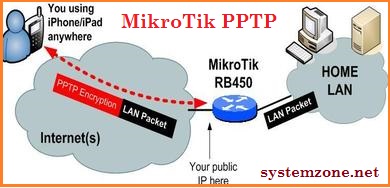Optimizing MikroTik Proxy Server For Efficient Web Filtering
Are you tired of slow internet speeds? Do you want to enhance your online experience? Look no further than a Mikrotik Router Web Proxy! This powerful tool can significantly improve your browsing speeds and provide an added layer of security. Let's dive into how you can set up and configure a Mikrotik Router Web Proxy.

First, make sure your Mikrotik router is up to date with the latest firmware. This will ensure that you have access to all of the latest features and security updates. Once you have confirmed your firmware is up to date, follow the steps below to configure your Mikrotik Router Web Proxy.
Step 1: Enabling the Web Proxy
The first step in configuring your Mikrotik Router Web Proxy is to enable the feature. To do this, open your router configuration page and click on the "Web Proxy" option. From here, click on the "General" tab and toggle the "Enabled" option to "yes". This will turn on the web proxy feature.
Step 2: Configuring the Web Proxy
Once you have enabled the web proxy feature, you will need to configure it. Click on the "Access" tab to access the web proxy configuration options. Here you can set up access policies for the web proxy, including which IP addresses are allowed to use it.
You can also configure the cache size and the cache storage location. The cache size determines how much data is cached by the web proxy, while the cache storage location determines where the cache data is stored on your router. It's recommended to set the cache size to around 10% of your router's available storage space.
Step 3: Configuring Access Policies
After configuring the web proxy settings, you will need to set up access policies to determine how the web proxy is utilized. Click on the "Access" tab and then click on the "Add New" button. From here, you can set up various access policies based on IP addresses, time of day, and other criteria.
For example, you could set up an access policy that only allows certain IP addresses to use the web proxy during certain times of day. This allows you to restrict access to the web proxy to only those who need it, ensuring maximum performance for your network as a whole.
Step 4: Testing and Troubleshooting
Finally, you will want to test and troubleshoot your Mikrotik Router Web Proxy configuration. Start by accessing a website through the web proxy to ensure your configuration has been successful. If you encounter any issues, check the log files on your router to identify the problem.
If you are having trouble getting your web proxy to work correctly, you can also try resetting the configuration to the default settings and starting over. In most cases, this will resolve any issues you may be experiencing.
In Conclusion...
Overall, configuring and using a Mikrotik Router Web Proxy can be a great way to enhance your internet browsing experience and improve overall network performance. By following the steps outlined above, you can get your web proxy up and running quickly and easily.
Remember, regularly updating your router firmware and implementing the latest security measures can help keep your network safe and secure. With the addition of a Mikrotik Router Web Proxy, you can take your online experience to the next level.




Post a Comment for "Optimizing MikroTik Proxy Server For Efficient Web Filtering"